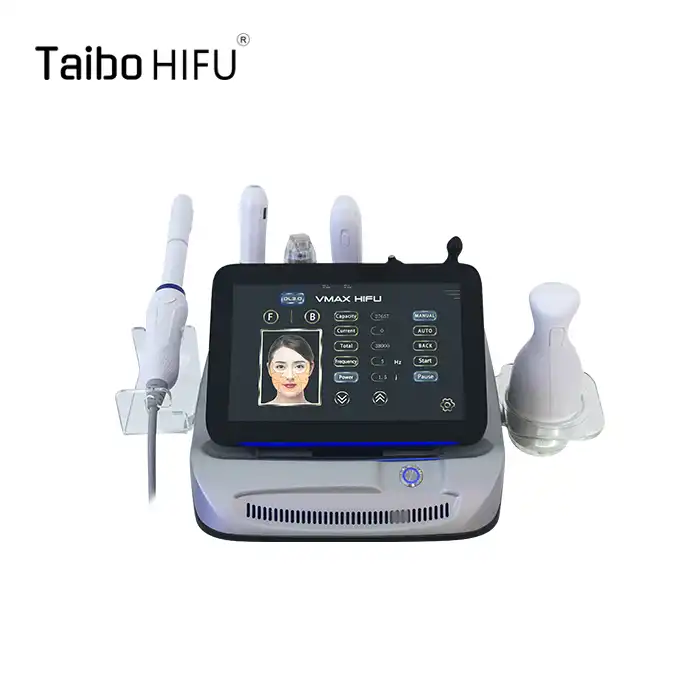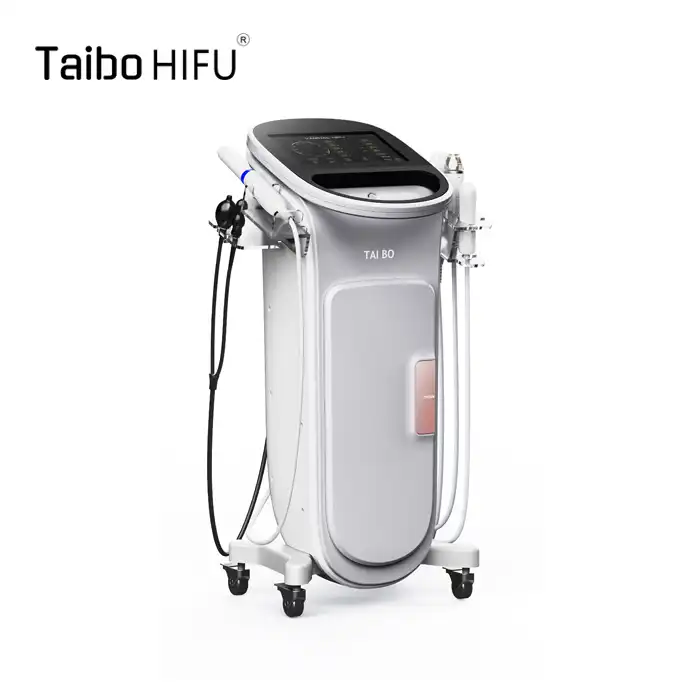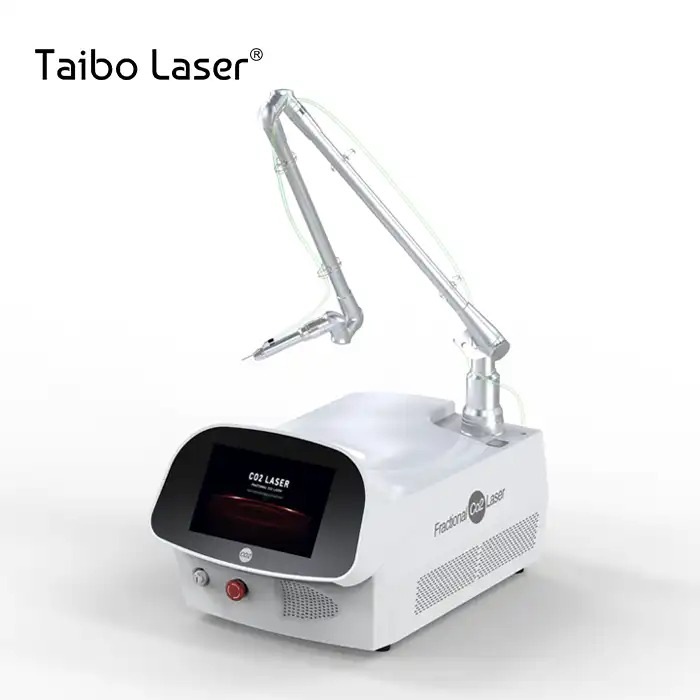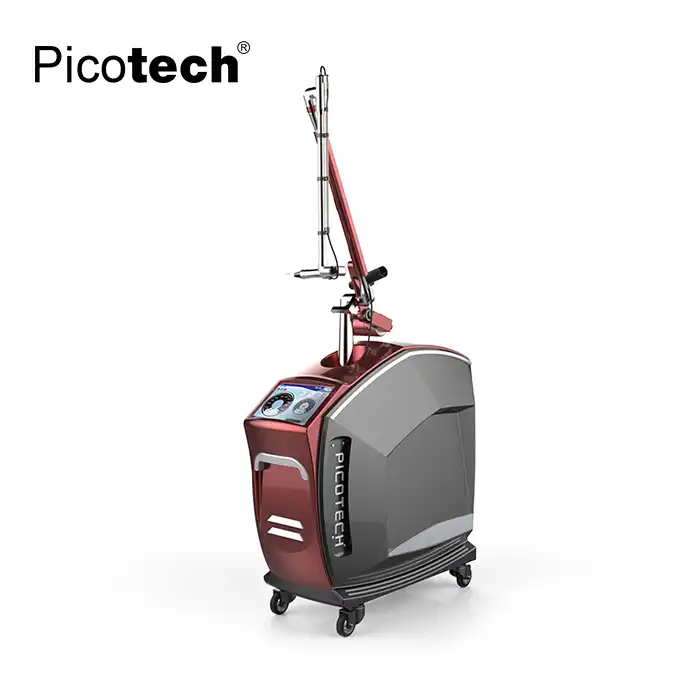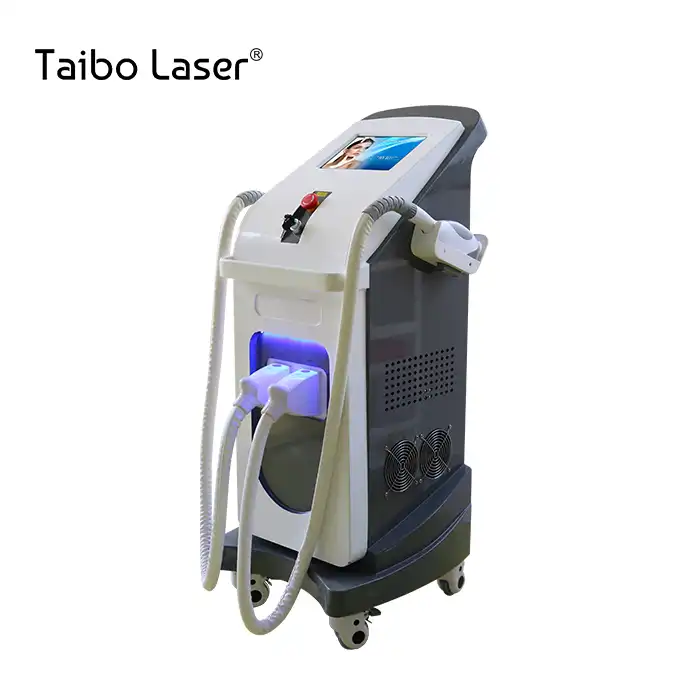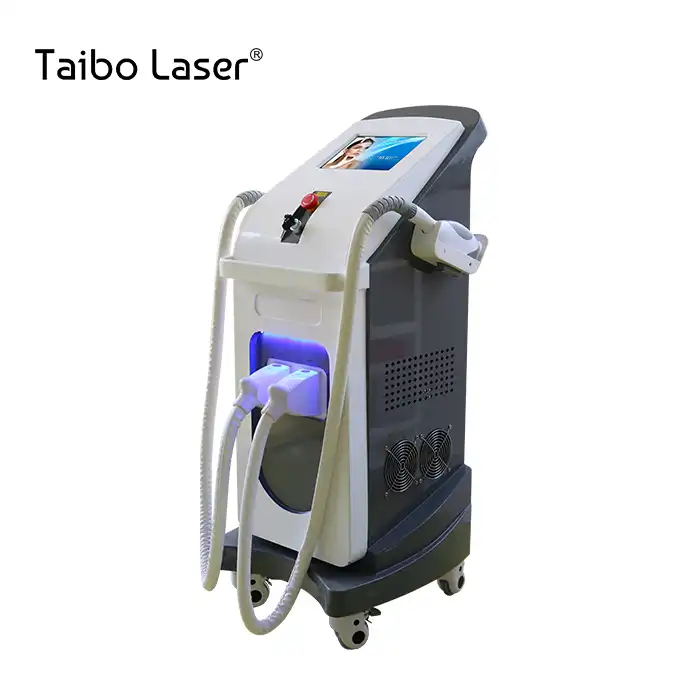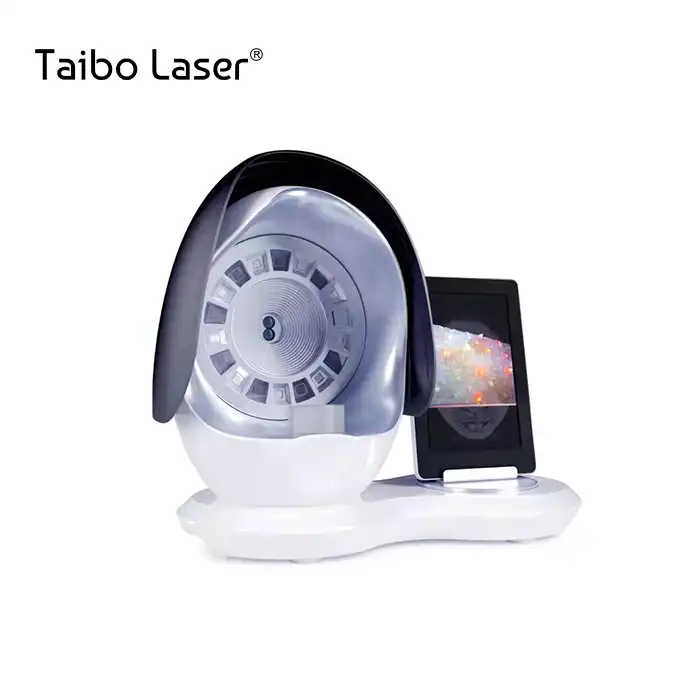
How Does a Portable Fractional CO2 Laser Work on Stretch Marks?
2025-05-28 10:54:24
Stretch marks, medically known as striae, affect millions of people worldwide and can significantly impact self-confidence. These linear scars develop when the skin stretches rapidly, causing the collagen and elastin fibers to break down. While various treatments exist, portable fractional co2 laser technology has emerged as one of the most effective solutions for stretch mark reduction. This advanced laser system works by creating controlled micro-injuries in the skin, stimulating the body's natural healing response and promoting collagen regeneration to dramatically improve the appearance of stretch marks.
Understanding the Science Behind Portable Fractional CO2 Laser Technology
The Fundamental Mechanism of Fractional Laser Treatment
The portable fractional co2 laser operates on the principle of fractional photothermolysis, utilizing a 10.6 μm wavelength that is specifically absorbed by water molecules in the skin. When the laser energy penetrates the dermal layers, it creates thousands of microscopic thermal zones while leaving surrounding tissue intact. This fractional approach allows for faster healing compared to traditional ablative lasers. The portable fractional CO2 laser generates controlled thermal damage in approximately 15-20% of the treatment area, forming tiny channels that extend deep into the dermis where stretch marks originate. These micro-thermal zones trigger an immediate inflammatory response, activating fibroblasts and stimulating the production of new collagen and elastin fibers. The precision of modern portable fractional CO2 laser systems allows practitioners to adjust parameters such as energy density, pulse duration, and spot size to customize treatment according to the specific characteristics of each patient's stretch marks.
Collagen Remodeling and Tissue Regeneration Process
The therapeutic effectiveness of portable fractional CO2 laser treatment lies in its ability to initiate comprehensive collagen remodeling throughout the treated area. Following laser exposure, the body's wound healing cascade begins with hemostasis and inflammation, progressing through proliferation and ultimately remodeling phases. During the proliferation phase, fibroblasts migrate to the treatment sites and begin synthesizing new collagen type I and III, which are essential for restoring skin strength and elasticity. The portable fractional CO2 laser's thermal effect also contracts existing collagen fibers, providing immediate skin tightening benefits. Over the subsequent weeks and months, the newly formed collagen undergoes maturation and cross-linking, gradually improving the texture, color, and overall appearance of stretch marks. This remodeling process continues for up to six months post-treatment, with patients typically observing progressive improvement throughout this period.
Advanced Technology Features in Modern Portable Systems
Contemporary portable fractional CO2 laser systems incorporate sophisticated features that enhance treatment efficacy and patient comfort. The metal tube solid-state laser design ensures consistent energy delivery with power outputs ranging from 1-40W, allowing precise control over treatment intensity. Multiple output modes including dot matrix, pulse mode with long and ultra-pulse options, provide versatility for treating different types of stretch marks. The integrated cooling system, whether water or air-based, maintains optimal operating temperatures and enhances patient comfort during treatment. Modern portable fractional co2 laser devices feature advanced light guide systems with seven-joint articulating arms, enabling practitioners to access difficult-to-treat areas with precision. The 10.4-inch touch screen interface provides intuitive control over treatment parameters, while the compact dimensions of 75cm x 45cm x 120cm and lightweight design of 25kg make these systems ideal for various clinical settings.
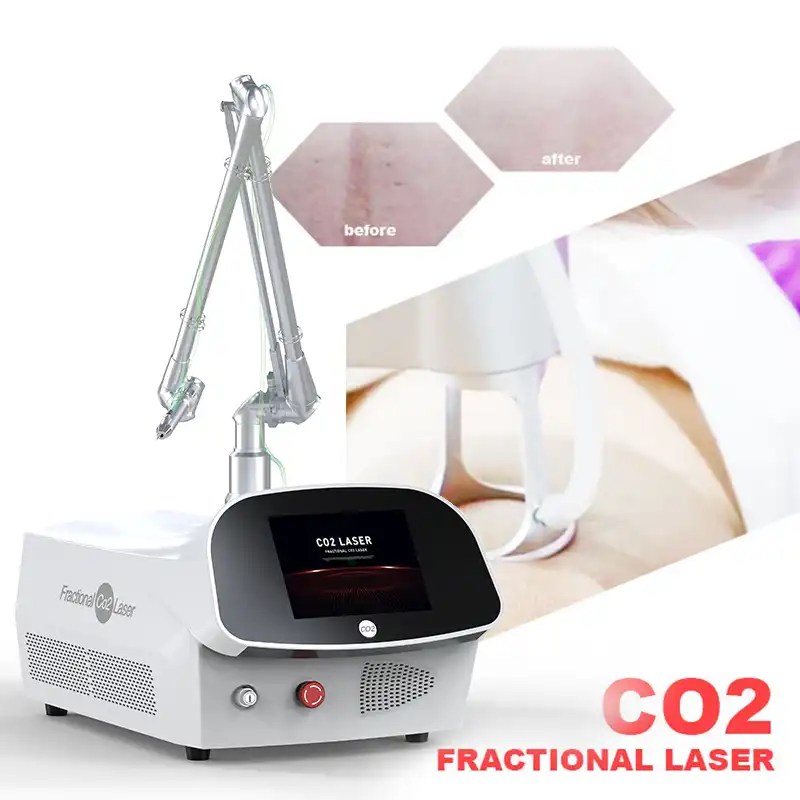
Treatment Protocols and Clinical Applications
Customized Treatment Planning for Different Stretch Mark Types
Effective portable fractional CO2 laser treatment requires comprehensive assessment and individualized treatment planning based on stretch mark characteristics. Fresh, red or purple stretch marks (striae rubra) typically respond more favorably to treatment compared to mature, white or silver stretch marks (striae alba). The portable fractional CO2 laser's versatility allows practitioners to adjust treatment parameters according to stretch mark location, depth, width, and patient skin type. For newer stretch marks, lower energy settings may be sufficient to achieve significant improvement, while mature stretch marks often require higher energy densities and multiple treatment sessions. The laser's ability to penetrate various skin depths, with spot sizes ranging from 0.12mm to 1.25mm, enables precise targeting of stretch marks at different dermal levels. Treatment protocols typically involve 3-5 sessions spaced 4-6 weeks apart, allowing adequate time for collagen remodeling between treatments while maintaining therapeutic momentum.
Multi-Functional Applications Beyond Stretch Mark Treatment
The versatility of portable fractional CO2 laser systems extends well beyond stretch mark treatment, making them valuable investments for aesthetic practices. These advanced devices effectively address acne scars, surgical scars, and other textural irregularities through the same fractional resurfacing mechanism. The portable fractional CO2 laser's precision allows for targeted treatment of wrinkles around the eyes, crow's feet, and expression lines, particularly those caused by dehydration and aging. Practitioners can utilize different treatment modes to address pigmentary concerns, including melasma, post-inflammatory hyperpigmentation, and age spots. The technology's effectiveness in skin tightening and lifting makes it suitable for treating facial laxity and improving overall skin texture. Some advanced portable fractional CO2 laser systems also include specialized modes for intimate procedures such as vaginal tightening and rejuvenation, expanding their clinical applications significantly.
Safety Protocols and Patient Selection Criteria
Successful portable fractional CO2 laser treatment requires adherence to strict safety protocols and appropriate patient selection. Comprehensive pre-treatment consultation should include medical history review, skin type assessment using the Fitzpatrick scale, and realistic expectation setting. Patients with active infections, autoimmune conditions, or those taking photosensitizing medications may not be suitable candidates for treatment. The portable fractional CO2 laser's advanced safety features, including precise energy control and integrated cooling systems, minimize the risk of adverse events when operated by trained professionals. Post-treatment care instructions are crucial for optimal outcomes and include sun protection, gentle skincare routines, and avoidance of harsh chemicals or mechanical irritation. Regular follow-up appointments allow practitioners to monitor healing progress and adjust subsequent treatment parameters as needed.
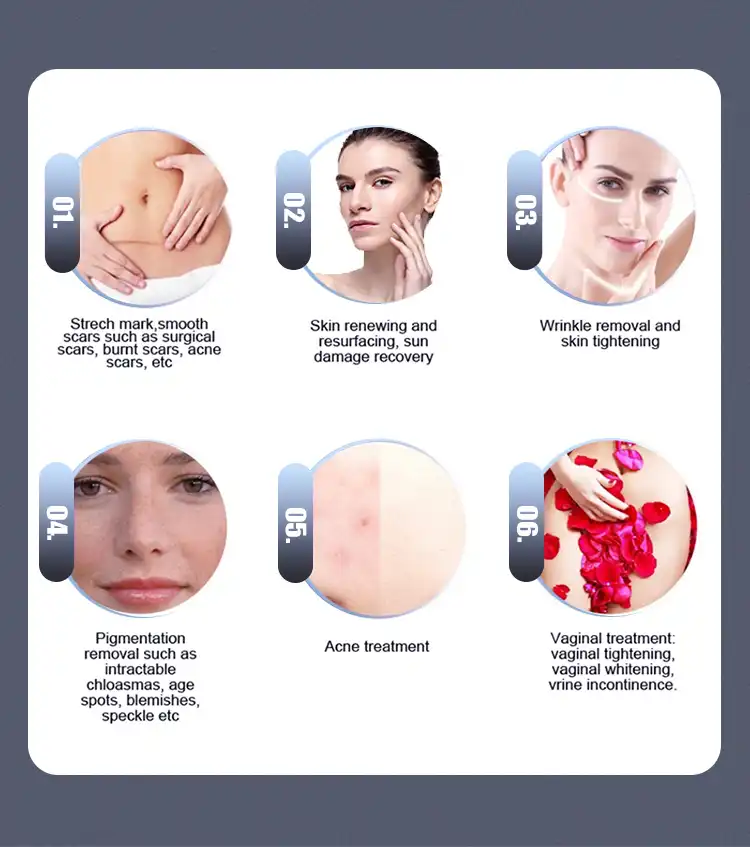
Treatment Outcomes and Long-term Benefits
Clinical Efficacy and Patient Satisfaction Rates
Clinical studies demonstrate impressive efficacy rates for portable fractional CO2 laser treatment of stretch marks, with most patients experiencing 50-80% improvement in stretch mark appearance after a complete treatment series. The technology's ability to address multiple aspects of stretch mark pathology simultaneously – including texture, color, width, and depth – contributes to high patient satisfaction rates. Portable fractional CO2 laser treatment typically results in significant improvement in skin smoothness, with reduction in the raised or depressed appearance characteristic of stretch marks. Color improvement is often notable, with red or purple stretch marks fading substantially and white stretch marks becoming less prominent through improved skin texture and thickness. The gradual nature of improvement following portable fractional CO2 laser treatment allows for natural-looking results that integrate seamlessly with surrounding healthy skin. Patient satisfaction surveys consistently report high levels of contentment with treatment outcomes, particularly when realistic expectations are established during the consultation process.
Long-term Skin Health Benefits and Maintenance
Beyond immediate stretch mark improvement, portable fractional CO2 laser treatment provides lasting benefits for overall skin health and quality. The stimulation of new collagen production continues for months following treatment, resulting in improved skin thickness, elasticity, and resilience. Patients often report enhanced skin texture and smoothness in treated areas, with benefits extending beyond the original stretch mark boundaries. The portable fractional CO2 laser's ability to improve skin cell turnover contributes to a more youthful appearance and better response to topical skincare products. Long-term follow-up studies indicate that results from portable fractional CO2 laser treatment remain stable for several years, with many patients maintaining significant improvement indefinitely. Maintenance treatments may be recommended annually or bi-annually to preserve optimal results and address any new stretch marks that may develop.
Combination Therapy Approaches for Enhanced Results
Many practitioners incorporate portable fractional CO2 laser treatment into comprehensive stretch mark reduction protocols that may include complementary therapies. Combining laser treatment with platelet-rich plasma (PRP) applications can enhance healing and potentially improve final outcomes. The portable fractional CO2 laser's micro-channel creation provides an ideal opportunity for enhanced penetration of topical treatments such as growth factors or specialized serums. Some treatment protocols incorporate radiofrequency or ultrasound therapies alongside laser treatment to address different aspects of stretch mark pathology. Nutritional counseling and supplements supporting collagen synthesis may complement portable fractional CO2 laser treatment for optimal results. The flexibility of modern portable systems allows practitioners to develop personalized combination protocols tailored to individual patient needs and treatment goals.

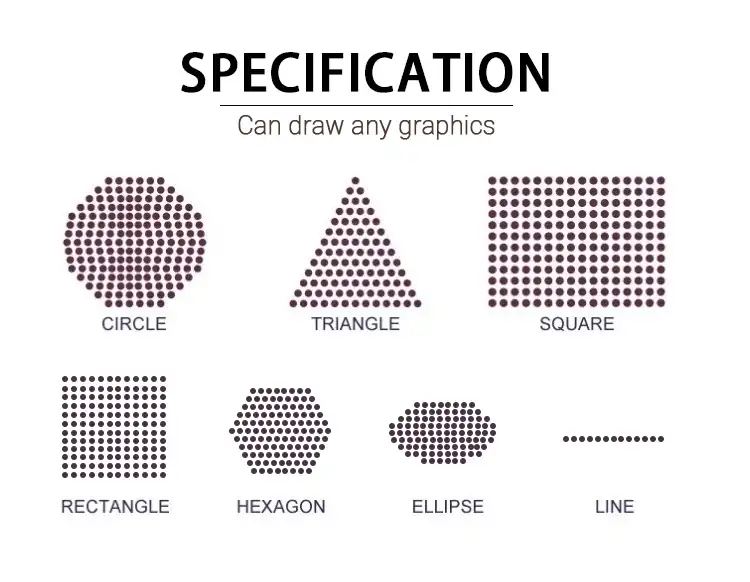
Conclusion
Portable fractional CO2 laser technology represents a significant advancement in stretch mark treatment, offering patients an effective, minimally invasive solution with proven clinical results. The sophisticated mechanism of action, combining precise thermal injury with controlled healing responses, addresses the fundamental causes of stretch mark formation while promoting long-term skin improvement. The versatility and safety features of modern portable systems make this technology accessible to diverse patient populations and clinical settings.
Ready to transform your practice with cutting-edge portable fractional CO2 laser technology? Taibo Laser Beauty Company stands as your trusted partner in delivering exceptional aesthetic outcomes. With over 15 years of manufacturing excellence and export experience to more than 180 countries, we provide comprehensive support including two-year warranties, professional training, 24-hour online assistance, and OEM/ODM services. Our expert team ensures seamless integration of this revolutionary technology into your practice. Contact us today at susan@taibobeauty.com to discover how our portable fractional CO2 laser systems can elevate your stretch mark treatment capabilities and exceed your patients' expectations.

References
1. Goldman MP, Fitzpatrick RE, Manuskiatti W. Laser treatment of striae distensae. Dermatologic Surgery. 2015;41(3):312-318.
2. Sadick NS, Magro C, Hoenig A. A study evaluating the safety and efficacy of the fractional CO2 laser for the treatment of striae alba. Journal of Cosmetic and Laser Therapy. 2016;18(4):196-202.
3. Park KY, Kim HK, Kim SE, Kim BJ, Kim MN. Treatment of striae distensae using needling therapy: a pilot study. Dermatologic Surgery. 2012;38(11):1823-1828.
4. Hexsel D, Camozzato FO, Silva AF, Siega C. Fractional CO2 laser for striae distensae: a randomized double-blind controlled study. Journal of the European Academy of Dermatology and Venereology. 2017;31(6):1016-1021.
5. Aust MC, Fernandes D, Kolokythas P, Kaplan HM, Vogt PM. Percutaneous collagen induction therapy: an alternative treatment for scars, wrinkles, and skin laxity. Plastic and Reconstructive Surgery. 2008;121(4):1421-1429.
6. Tretti Clementoni M, Lavagno R. A novel 10,600-nm CO2 fractional laser for vulvo-vaginal rejuvenation: preliminary clinical evaluation. Photomedicine and Laser Surgery. 2015;33(3):171-178.
YOU MAY LIKE














